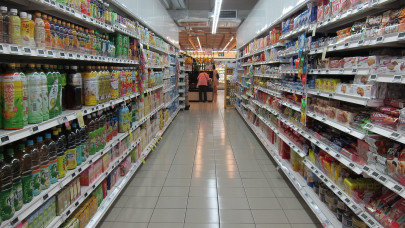The lack of real digitization and transparent communication from state institutions throughout 2024 only demotivated taxpayers to invest their financial resources, time, and energy to benefit their businesses.
"Because of the legislative installability, the tax changes that are constantly taking place, the desire of entrepreneurs to invest in their businesses has slowed down, not knowing what to expect next. For example, with a simple analysis on the ANAF website, we see that in 2024 178 fiscal changes were made until the end of November, so approximately one fiscal change every two days, changes that the business environment has to fight for that they appear unpredictably. In all this tumult, because they do not know what to expect, many companies are tempering their investments, although they would need to ensure their stability and growth. Entrepreneurs who have realized that they have to prevent and protect their businesses have prepared ahead of time by choosing to digitize business processes and automate part of the work both to keep costs under control and to declare correctly to ANAF to avoid fines. Digitization has become a necessity, not just a competitive advantage. SMEs need integrated solutions that help them quickly adapt to legislative changes, automate reports to ANAF, such as e-Invoice and SAF-T, and reduce administrative risks. In the absence of these tools, companies face an increased risk of penalties and operational difficulties", says Roxana Epure, Managing Partner NextUp, a provider of software solutions for over 6,000 SMEs.
In this context, NextUp equipped 50% more businesses than last year, SMEs that requested modern software for efficient business management and data transmission to ANAF. The demand of SMEs has increased spectacularly in 2024 for the provision of an ERP that automates business processes, simplifies e-Invoice and SAF-T operations and is constantly updated with any new fiscal changes from the state.
Businesses fight bureaucracy and unpredictability through digitization
In this climate of uncertainty, businesses must find solutions to remain competitive and tax-compliant. In a time of chaos, digitization is not just a strategic choice but an essential measure for survival and growth. Companies that adopt technology now will be the ones that will be able to adapt more easily to change and remain competitive in the future.
"The business environment no longer wants surprises that directly impact their expenses, but needs legislative stability. Officials need to understand that entrepreneurs need predictability. That should be their focus. New tax measures have already been announced, but we don't know what they are. We know that tax increases are coming, changes that affect SMEs, but we don't know which ones, and we don't know the impact on budgets either. Of course, they can have a minimum of predictability, in their backyard, through integrated systems on their part, with the help of which they will automate their workflow so that they do not work twice and spend minimally to solve the requirements imposed by the state institutions. In 2025, we expect entrepreneurs to understand even better that without digitization, integrated systems, and automation, their businesses cannot cope with bureaucracy and increasingly complex requirements from the state. As the Romanian state is slowly digitizing, the private sector is forced to compensate for this lack of efficiency with its solutions to correctly transmit the necessary data to ANAF and protect itself from such fines," adds Roxana Epure.
NextUp is the developer of an ERP software that saves entrepreneurs time with red tape and gives them predictable real-time indicators, so they can make decisions with the numbers in front of their businesses. The NextUp software is adapted to local businesses and used mainly in online retail, traditional retail, production, distribution, construction, and services, to automate repetitive activities that consume resources and optimize business processes and forecasts. NextUp has over 6,000 customers, with an average of 5 users per company.










